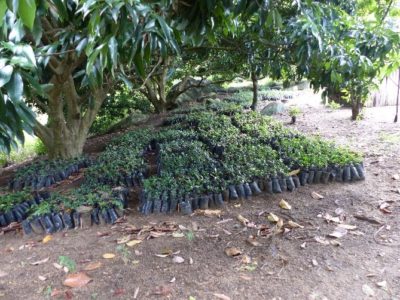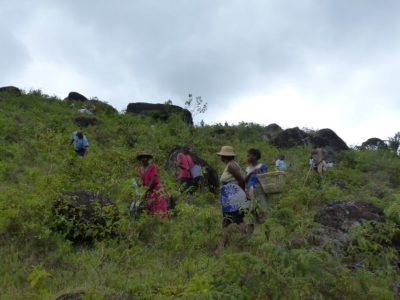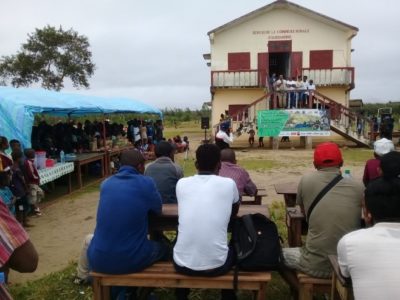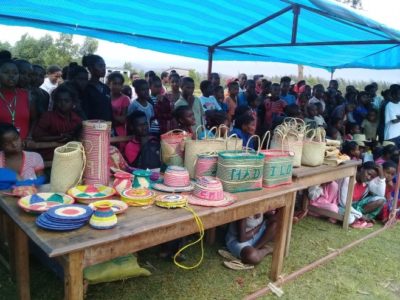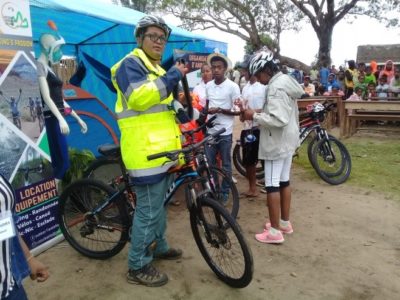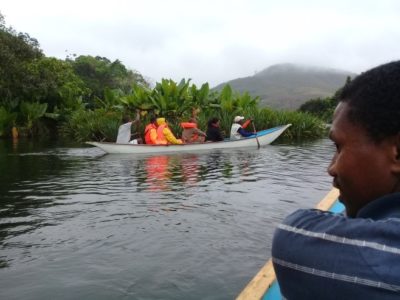About Tsitongambarika Protected Area
Deforestation and hunting by humans have devastated the lemur community in the Tsitongambarika humid forest in the south-east corner of Madagascar. The area is one of the largest expanses of lowland humid forest remaining in the country, and home of seven lemur species – all little known and now highly threatened. In 2009 the Malagasy government declared Tsitongambarika a Protected Area, banning tree cutting and hunting. Forest clearance for traditional tavy agriculture and a high dependency on forest resources for food, housebuilding and fuel mean that local people face a big change to their ancestral livelihoods.
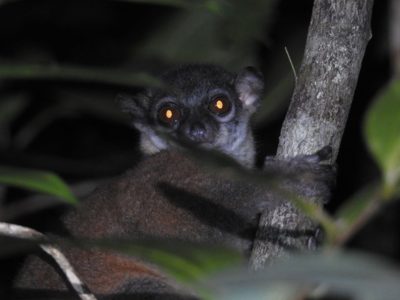
Lemurs at Tsitongambarika
Tsitongambarika’s lemur community comprises seven lemur species. The Critically Endangered Madame Fleurette’s sportive lemur (Lepilemur fleuretae; in this photo) and four Endangered species: the southern woolly lemur (Avahi meridionalis), the collared brown lemur (Eulemur collaris), the Anosy mouse lemur (Microcebus tanosi), and the aye-aye (Daubentonia madagascariensis; one of the top 25 most endangered primates). A Vulnerable species of bamboo lemur (Hapalemur meridionalis) and a dwarf lemur (Cheirogaleus major) are also present in this forest.
Asity Madagascar and Partners to Protect Tsitongambarika
Since 2009, the NGO Asity (Birdlife) Madagascar has worked with local communities to manage the forest and help people adjust their livelihoods. Thanks to grant support from SOS Save our Species a consortium of conservation actors, made up of Asity Madagascar, the Malagasy conservation consultancy Tropical Biodiversity and Social Enterprise (TBSE), and Oxford Brookes University, is now leading an initiative to save Tsitongambarika’s remaining lemur populations. This project is focused on two target areas, one in the North and one in the South of the protected area, to strengthen the conservation capacity of all stakeholders and maximise the prospects that the lemur and forest protection activities will continue beyond the project’s lifespan.
The project has five key actions to tackle our objectives:
- Improving detection and enforcement of illegal activities by training dedicated teams in forest patrol techniques, natural resource management rules and fire prevention
- Creating an ecological corridor to reconnect a forest gap within the protected area that currently forms a major barrier to animal movements
- Ecological monitoring of the lemur populations in target areas and investigation of the local drivers of lemur hunting and its impact on lemur populations
- Launching a 1-day per month ‘Nature Club’ with primary and secondary schools, offering guided forest visits and classroom activities
- Developing ecotourism in north Tsitongambarika, using the research station as a base
What We Have Achieved in the Project’s First Year
During the first year of the project, we have achieved several important goals.
Training in Forest Management and Fire Prevention
The polis’an ala (forest rangers) teams responsible for natural resource management in the two target areas have been renewed and trained in forest management and fire prevention. Team members were nominated by each village.
Reforestation
We have agreed the area for the reforestation corridor with surrounding communities and prepared 14,000 endemic seedlings via two local tree nurseries. The tree planting was launched on February by community members, together with 20 Gendarmes, Asity Madagascar and TBSE staff. Polisin’ala are now patrolling the site regularly.
Ecological Monitoring of the Lemur Population
The ecological monitoring of the lemur population is underway with more than 100 kilometers of transects surveyed during the day and night. To help survey elusive species (like the aye-aye) we set up a camera-trap system in August 2019. Observations of our target lemur species are also systematically conducted to monitor population densities and improve understanding of their behavior in this habitat. An in-depth study is underway to explore local people’s attitudes towards lemurs and the role of lemur hunting in their lives, using participant observation and semi-structured interviews.
Education and Training
We have held environmental education training events for teachers in local schools to enhance their knowledge of Tsitongambarika’s biodiversity. In August, we launched the first “Nature Club”, with 24 primary school students visiting the research station to learn about animal and plant species.
Ecotourism
In October, we launched the Tsitongambarika ecotourism initiative, together with the Anosy Regional Government and the Regional Office of Tourism. A camping area has been created for tourists at the research station with traditional style wooden buildings. Access has been improved by building bridges and the purchase of fiberglass canoes. Five local guides have been trained in guiding techniques, the biodiversity and conservation of Tsitongambarika, and identification of animal and plant species of most interest to visitors.

